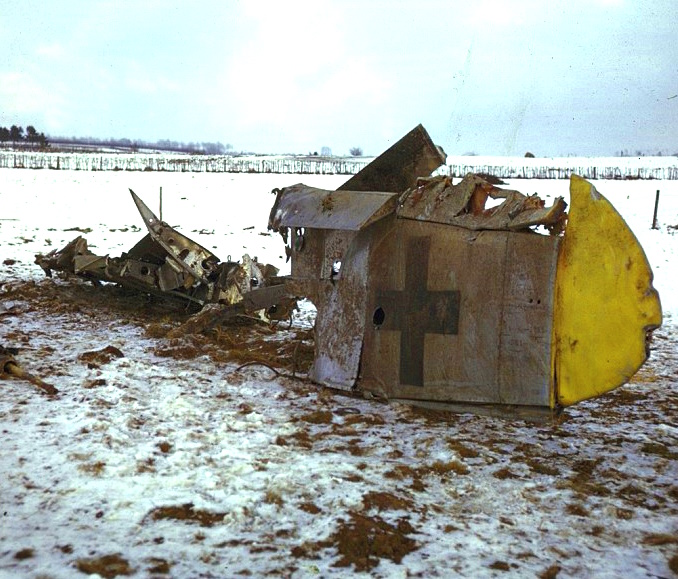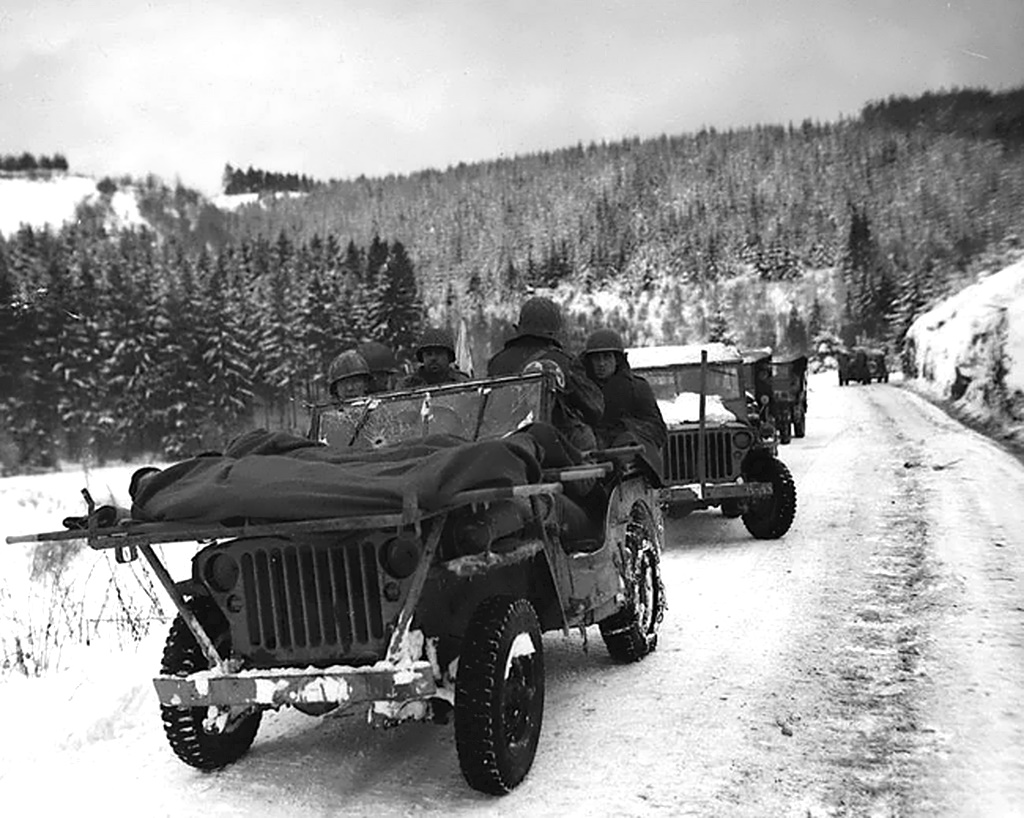Document Source: Command and General Staff College, Fort Leavenworth, Kansas, The Battle of the Ardennes, December 1944 – January 1945, by Sgt Theodore Draper, Maps by Sgt Walter Chapman, Photographs by Pfc Maurice Miller and Doc Snafu. Foreword by Major General A. R. Rolling. Historical Section, 84th Infantry Division.

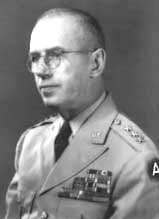 As an ideal, we have always believed that every man should know – before every battle – what he is going into and why. We also believed that every man should know – after every battle – what he, his organization, and his army have accomplished and why. In this division, we are trying to live up to that ideal in reports to our men such as this. Often, the ‘after battle’ orientation is neglected. One action follows another and the last one monopolizes our interest. We miss golden opportunities to benefit from the lessons of experience and to draw inspiration from our accomplishments. In this division, we do not wish to miss those opportunities. The man in the line who carries the brunt of all the fighting and who deserves all the credit cannot be expected to get the ‘big picture’. He has his hands full with the ‘little’ ones. Primarily this report is meant for him. I think he will find that he will fight better if he knows from past experience that his share was indispensable in the battle, the campaign, and the war as a whole. But I am sure they will not be the only ones to find it interesting and important. The battle of the Ardennes was historic. No history of this war could afford to leave it out. We did something to make that history and now we feel we ought to do something to preserve it. As someone once said, history is the last thing we think about during a war – and the first thing we think about after it is over. But then it may be too late. I hope this will be only the first of a series of such reports. I know that in the years to come, I, for one, will want to read the words, look at the photographs, and study the maps. It will bring back memories of days when all of us were tried by fire and came through.
As an ideal, we have always believed that every man should know – before every battle – what he is going into and why. We also believed that every man should know – after every battle – what he, his organization, and his army have accomplished and why. In this division, we are trying to live up to that ideal in reports to our men such as this. Often, the ‘after battle’ orientation is neglected. One action follows another and the last one monopolizes our interest. We miss golden opportunities to benefit from the lessons of experience and to draw inspiration from our accomplishments. In this division, we do not wish to miss those opportunities. The man in the line who carries the brunt of all the fighting and who deserves all the credit cannot be expected to get the ‘big picture’. He has his hands full with the ‘little’ ones. Primarily this report is meant for him. I think he will find that he will fight better if he knows from past experience that his share was indispensable in the battle, the campaign, and the war as a whole. But I am sure they will not be the only ones to find it interesting and important. The battle of the Ardennes was historic. No history of this war could afford to leave it out. We did something to make that history and now we feel we ought to do something to preserve it. As someone once said, history is the last thing we think about during a war – and the first thing we think about after it is over. But then it may be too late. I hope this will be only the first of a series of such reports. I know that in the years to come, I, for one, will want to read the words, look at the photographs, and study the maps. It will bring back memories of days when all of us were tried by fire and came through.
We have tried to make this report as accurate as possible by using available records, by personal interviews with key men in as many Regiments and Battalions and Companies as we could reach, and by checking and rechecking. We know that many readers will possess far more information about particular aspects of the action than we do. For this reason, we would sincerely welcome suggestions, criticism, additions, corrections, and comments of whatsoever nature. We hope to go over this same ground in greater detail in the future history of the division and we will be able to incorporate new material. The historical section can only be as good as the material it gets in records, reports, and interviews. We hope that this work will show that no time is wasted by giving us full cooperation. For the splendid cooperation that we have already received, we are deeply grateful.
84th Infantry Division – A Few Words About It
 84th Infantry Division (Railsplitter Division) (Lincoln Division). During World War I, the 84th Division was referred to as the ‘Lincoln’ division because it was primarily made up of National Guard (i.e., National Army) units from Illinois, Kentucky, and Indiana, the Lincoln States. Its original insignia was a red ax on a white background within a red circle, with the name ‘Lincoln’ above the ax and the number ’84’ below it. In World War II, the insignia consisted of a white ax splitting a white rail on a red circular background. Both insignias recall President Lincoln’s youthful use of the ax. With the addition of a split rail, the division adopted the new nickname of ‘Railsplitters’.
84th Infantry Division (Railsplitter Division) (Lincoln Division). During World War I, the 84th Division was referred to as the ‘Lincoln’ division because it was primarily made up of National Guard (i.e., National Army) units from Illinois, Kentucky, and Indiana, the Lincoln States. Its original insignia was a red ax on a white background within a red circle, with the name ‘Lincoln’ above the ax and the number ’84’ below it. In World War II, the insignia consisted of a white ax splitting a white rail on a red circular background. Both insignias recall President Lincoln’s youthful use of the ax. With the addition of a split rail, the division adopted the new nickname of ‘Railsplitters’.
AT ALL COSTS
Every big battle is made up of little battles but it is not always clear what relation the little ones had to the big one. Sometimes the big battle seems to have a life of its own and the little ones do not add up. You have to stand off from the parts and try to see them as a whole before they make sense and fall into a distinct pattern. Much of the fighting in the North-African Desert was like that. But there are times when you cannot know what the battle was really like until you get down to the battalions, the companies, or even the platoons. The little battle is like a perfectly clear pool in which you can see the big picture at the bottom. Above all, there is one, an immense advantage in paying the closest attention to the little picture. Everything becomes more concrete and more realistic. It is not so easy to make vague and sweeping generalizations. What is little and what is big in a battle depends, of course, on where you happen to be looking from. In the battle of the Ardennes, in which many divisions were involved, the story of a single division was relatively little. No division can claim to tell the whole story or even a major part of it. But there were several divisions that played a role that was like a red thread through the entire action. The 84th Infantry Division was one of them.
In general, the Battle of the Ardennes, also known as the Battle of the Bulge, passed through three, major phases. The German offensive broke out on December 16, 1944, and lasted in full force for twelve days. The 84th did not get into the beginning of this phase but it more than made up for it at the end. As soon as the German drive was brought to a halt, both sides began to regroup their forces. The third phase, the Allied counter offensive to wipe out the German Bulge, started on January 3, 1945, and achieved its aim on January 16. In this phase, the 84th’s part was central. In the case of the 84th, then, we are able to follow every phase of the battle in the story of a single division. Inevitably, as the fighting went on, the ghost of the French defeat in 1940 seemed to hover over the battlefield.
MAY 1940 – DECEMBER 1944
Basically, the German breakthroughs of May 10-13, 1940, and December 16-28, 1944, seem very similar. Both, Gen Gamelin and Gen Bradley, took a calculated risk when they decided to concentrate their main forces north of the Belgian Ardennes and hold the Ardennes itself with relatively light forces. Gen von Rundstedt of 1940 and Marshal von Rundstedt of 1944 both decided to strike at precisely the weak point of the Allied line in order to turn the strong point. Gen von Rundstedt succeeded and Marshal von Rundstedt – we can afford to give the devil his due – made a good try, considering the desperation of his case, to begin with. In 1940, Rundsledt reached the Meuse River between Sedan and Dinant, then turned northwest along the Somme River to Abbeville, and boxed in the main Allied forces in Belgium. In 1944, Rundstedt probably tried to reach the Meuse between Namur and Liège, then turn northwest along the Albert Canal to Antwerp, and box in the main Allied forces in Holland and Germany.
Not that this was necessarily Rundstedt’s expectation; it was probably his fondest hope. But it was perhaps not beyond the realm of possibility and if it had succeeded or had come anywhere near success, it would have been a colossal case of lightning striking twice in the same place. In 1940, the German attempt was more interesting than the Allied reaction. In 1944, the Allied reaction was more interesting than the German attempt. In 1940, the French had no forces at all in the Ardennes; they merely tried to rush some in. The Belgians had two divisions of their crack troops, Chasseurs Ardennais, and threw them in. The Chasseurs were supposed to carry out delaying actions, but delaying was interpreted in a special sense. For the most part, it merely meant demolitions and some half-hearted roadblocks. When the Allied command of 1940 thought of the Ardennes, they thought of it as an outpost of the Meuse. The real defense line was the Meuse; the Ardennes was useful only to the extent that some token resistance in the hills and woods would enable the Allied forces to get in position behind the Meuse.
This was the decisive error of 1940 which was not repeated in 1944. For the Ardennes is an almost ideal country to defend in. If a strategy of delaying action was at all necessary in 1940, there was no region in Western Europe where the enemy could have been forced to pay a higher price for every yard forward. The entire sector is full of commanding high ground. If the hills and ridge lines are held tenaciously, they must be taken one at a time. They can be taken even if they are held quite stubbornly, as our counteroffensive in January 1945 showed, but each attack must come in force and it must be carefully worked out. There is no easy way of racing through. The Ardennes is essentially a forest, from Rochefort south large patches of forest, above Rochefort one small patch of wood after another, often in clusters. These woods provide almost perfect opportunities for pockets of resistance. They can be cleaned out but they must take time and effort. Finally, the region is full of little villages and tiny bits of villages, strategically placed astride the roads. There is probably none that is impregnable but there is none that can be taken without a fight and there are several which might defy any attack for a long time.
There is a popular impression that the chief trouble in the Ardennes is the lack of good roads. As anyone on the ground will agree, the Ardennes has a fairly good road system. It is not the lack of roads as much as the lack of almost anything else on which to move that matters. The extremely woody, extremely hilly country makes it necessary very largely to stick to the roads in the best weather, but there are plenty of roads too slick too. This is where the hills, woods, and tiny villages make themselves felt. If they are defended strenuously, advancing along the roads may be difficult and costly. On the other hand, if no advantage of these strong points is taken, it may be possible to advance quite rapidly along the existing road network. It should be remembered, too, that the Germans advanced in 1940 at the best time of year, in the middle of May. But even we were able to stage our counteroffensive in the ice and snow of January 1945, when it was even more necessary to slick to the roads at least for our vehicles.
In December 1944, the Allied command faced essentially the same problem as the Allied command in May 1940. Should we defend in full strength east of the Meuse in the Ardennes or pull back behind the river? The decision of December 1944 was the former. The decision of May 1940 was the latter. Life has already passed judgment on the two but, to get the full value of the lesson, it is necessary to ask why. At Malmedy, St Vith, and Bastogne, to name only three of the outstanding places, our defense was magnificent and masterful. But some of the other stories may perhaps serve as an even more striking example of the strategic problem as we faced it. We had divisions in or near Malmedy, St Vith, and Bastogne when the Germans struck. But there was one place which at one time was almost wide open. There may be special significance in what we did there.
FROM GERMANY TO THE ARDENNES
Three days after it was launched, the German drive began to ooze southward as its center of gravity, the Malmedy – Stavelot sector, was stopped up. Once blocked at the northern end of the breakthrough front, the Germans began to look for weaker spots, and for a while, they thought they had found one further south in the Ardennes. By December 19, 1944, strong enemy forces were penetrating between Houffalize and Bastogne, a drive which would have led them to the Meuse between Givet and Namur, instead of between Namur and Liège. In this sector, the principal road centers were St Vith, Bastogne, La Roche en Ardenne, and Marche en Famenne. By December 22, La Roche and St Vith were captured and Bastogne was encircled. Unless Marche was held, it was very likely that the Germans would have rolled on to the Meuse. The Germans were confident that Marche was helpless. The famous demand for surrender which the Germans dropped on Bastogne on December 22 started: The fortune of war is changing. This time The USA forces in and near Bastogne have been encircled by strong German armored units. More German armored units have crossed the Our River near Ortheuville, have taken Marche and reached St Hubert by passing through Sibret and Tillet. But the Germans were not the only ones. In Paris, Marche was apparently considered so untenable that, on January 10, twenty-one days after our 84th Infantry Division went in and held it, it was still believed in German hands. What actually happened, however, should help to explain how and why the German drive was stopped dead before it reached the Meuse.
The German offensive opened on December 16. As late as December 18, the 84-ID was still fighting up in Germany, northeast of Geilenkirchen. In fact, on December 18, it captured the villages of Würm and Müllendorf, two strong points of the Siegfried Line. It was attached to the US 9-A whereas the German drive was aimed at the US 1-A. Yet, by the 19th, the 84-ID was preparing to move about seventy-five miles to the south, and by 10 o’clock the next evening, December 20, one of its regiments, the 334th Infantry, was already entering Marche. By the 21st, the entire division was safely settled in and around Marche. In May 1940, Gen Corap’s IX Army had at least three days to move into position along the Meuse between Sedan and Namur, using first-class roads and a railroad, but a large part of his army never arrived in time – Premier Reynaud claimed that as much as half was late. The speed with which some of our divisions were shifted from one front to another and from in December 1944 was the real counter-surprise command.
THE WIDE OPEN SPACES
 When the 84-ID pulled into Marche on December 20-21, it found itself in virtually a vacuum. The only organized force in the vicinity was the 51st Engineers Combat Battalion which was trying to hold road-blocks between La Roche and Hotton and between Champlon and Marche. The ‘fog of war’ was intense. We did not know what to expect in Marche, where the enemy was, how strong he was, or where and how strong our friendly forces were. It was completely unfamiliar ground, the terrain, unlike the country west of the
When the 84-ID pulled into Marche on December 20-21, it found itself in virtually a vacuum. The only organized force in the vicinity was the 51st Engineers Combat Battalion which was trying to hold road-blocks between La Roche and Hotton and between Champlon and Marche. The ‘fog of war’ was intense. We did not know what to expect in Marche, where the enemy was, how strong he was, or where and how strong our friendly forces were. It was completely unfamiliar ground, the terrain, unlike the country west of the 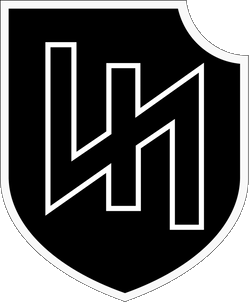
 Roer as possible. It took some time for the fog to dissolve. When it did, we found ourselves right in the path of the 2.SS-Panzer-Division and the 116.Panzer-Division with nothing on our left flank, above Hotton, and nothing on our right flank, below Marche. For at least three days, the 84-ID was out in the breeze around Marche, an island of resistance to hold back what was momentarily threatening to become a tidal wave of German Panzers.
Roer as possible. It took some time for the fog to dissolve. When it did, we found ourselves right in the path of the 2.SS-Panzer-Division and the 116.Panzer-Division with nothing on our left flank, above Hotton, and nothing on our right flank, below Marche. For at least three days, the 84-ID was out in the breeze around Marche, an island of resistance to hold back what was momentarily threatening to become a tidal wave of German Panzers.

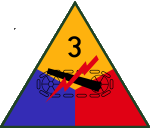 It was not until December 24, that the 2nd Armored Division was able to move down between Marche and the Meuse River as far as Humain and Buissonville and the 3rd Armored Division was able to connect up with the 84-ID at Hampteau on the Ourthe River. The big problem those first days was information. If ever a front was fluid, it was there. The confusion was immense. With no friendly troops on our flanks, it was impossible to get neighboring reports on the enemy’s movements. In May 1940, Allied units in similar circumstances almost invariably preferred to pull back to straighten out the line, to fill in the flanks, or to get behind another river. Instead, this time the 84-ID was ordered to hold the line Marche – Hotton at all costs. For a single division, this was a huge order. By December 22, our lines extended generally along the line Hampteau, Menil, Verdenne, Hollogne, Waha, Hassonville, Hogne, a distance of no less than twelve miles. Our foxholes were 150 yards apart. And we still had to find out what we were up against.
It was not until December 24, that the 2nd Armored Division was able to move down between Marche and the Meuse River as far as Humain and Buissonville and the 3rd Armored Division was able to connect up with the 84-ID at Hampteau on the Ourthe River. The big problem those first days was information. If ever a front was fluid, it was there. The confusion was immense. With no friendly troops on our flanks, it was impossible to get neighboring reports on the enemy’s movements. In May 1940, Allied units in similar circumstances almost invariably preferred to pull back to straighten out the line, to fill in the flanks, or to get behind another river. Instead, this time the 84-ID was ordered to hold the line Marche – Hotton at all costs. For a single division, this was a huge order. By December 22, our lines extended generally along the line Hampteau, Menil, Verdenne, Hollogne, Waha, Hassonville, Hogne, a distance of no less than twelve miles. Our foxholes were 150 yards apart. And we still had to find out what we were up against.
The position around Marche was uncertain enough but we could cut through the confusion only by plunging even further into the uncertainty. On December 22, two battalions, the 3/335-IR, and the 1/333-IR were sent out far beyond Marche to organize a counter-reconnaissance screen. The 3/335-IR went as far as Tellin, about eleven miles southwest of Marche. The 1/333-IR went as far as Wanlin, about fourteen miles west of Marche. If we came in without information, we were going out to get some. If we had nothing on our flanks, we were going to send something out. We were going to try to block the roads to Rochefort and Marche ourselves at least in order to buy precious time.
HOW TO LOOK FOR TROUBLE
If the division was out on a limb, those two battalions went out on the branches. The reconnaissance areas were so large that each battalion had to split up into companies which operated more or less independently and at least one company had to split up into more or less independent platoons. As for the 3/335-IR, Item Co managed to get to Rochefort on the afternoon of December 22. Love Co was supposed to go to Hargimont but it ran into heavy resistance at Marloie and could not move any further. The rest of the battalion went to Rochefort by way of Hogne, Sinsin, and Haversin to look the ground over to the north and west. At Rochefort, King Co was sent to establish roadblocks at Grupont and Tellin, two small villages astride the approaches to Rochefort. Two platoons were dropped off in Tellin and two platoons tried to get to Grupont. This battalion was now excellently placed to find out where the Germans were. They were all around.
By December 23, Love Co at Marloie was cut off by enemy forces between Marloie and Rochefort. Late that afternoon, German tanks and infantry started to come into Rochefort. The 2-AD was coming down towards Rochefort but, for a day, the 3/335-IR was all we had in the way of the 2.SS-Panzer-Division which was racing to a collision with our 2-AD. King Co was out on the leaves of the furthest branch. As the 1st and 2nd platoons were moving from Tellin to Grupont, just as they passed the village of Bure in between, the leading jeep was fired on. A civilian volunteered the information that there were nine Germans and a half-track in Grupont. The 1st platoon went off to Grupont. A German tank rumbled into Bure from Grupont and fired point-blank at the temporary CP. At one point, the company commander, Lt Leonard R. Carpenter, found himself entirely alone in a house in Bure. When three SS men came in to search the premises, he dove into a potato bin in the cellar, grimly holding on to a SCR 300 radio. After the SS men left empty-handed, he worked on the radio and broke into a conversation which hinted that his two platoons were still in Tellin. With the help of a Belgian civilian – civilians practically saved the company – he found a backwoods trail to Tellin.
